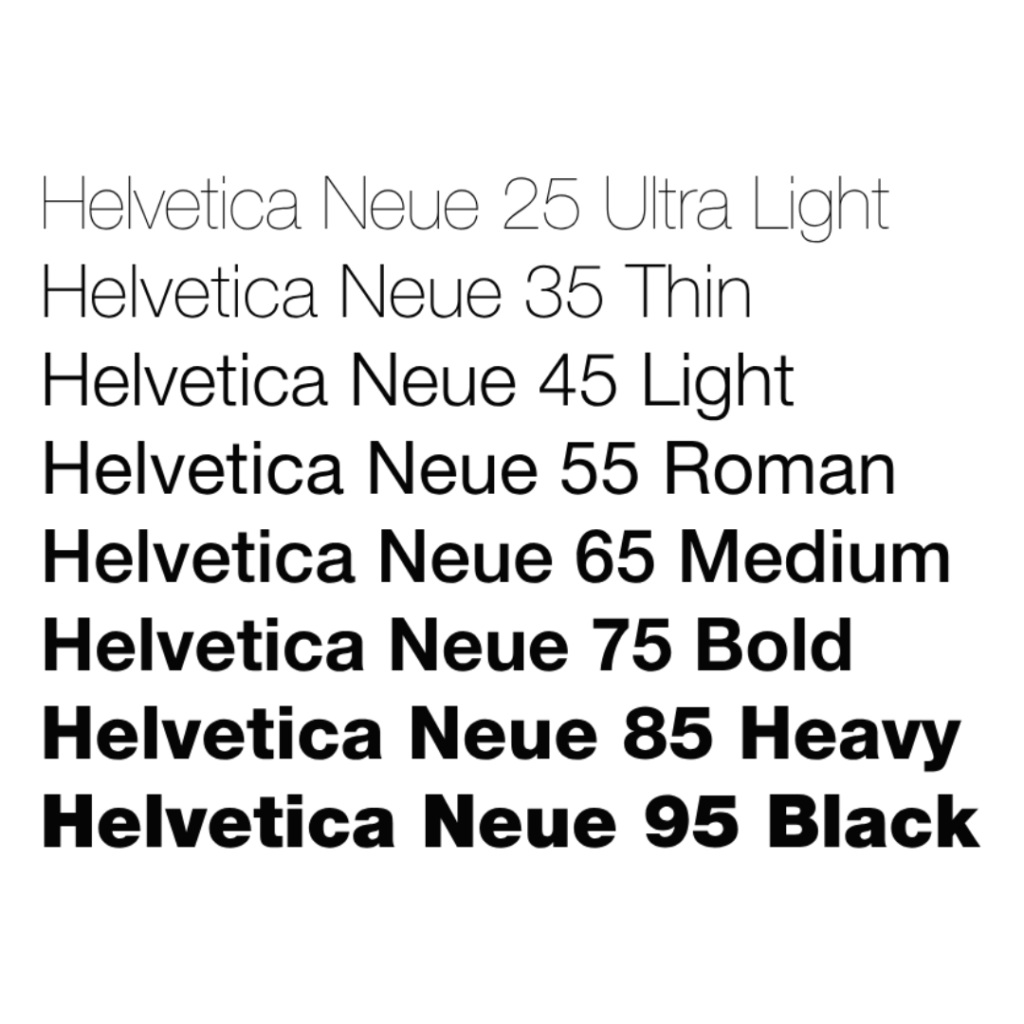What is Typography

Typography is the art and technique of arranging type to make written language legible, readable, and appealing.
Typeface vs Font
Typeface
A typeface refers to the design of a set of characters, including letters, numbers, punctuation marks, and symbols. It encompasses the overall appearance, style, and characteristics of the characters.
for example
Times New Roman
Helvetica
Notable
Arial
Raleway
Font
A font, on the other hand, refers to a specific variation or style within a typeface. It includes various attributes such as weight, style (italic, bold, etc.), and size. For instance, within the Helvetica typeface, you can have different fonts like
for example
Helvetica Regular
Helvetica Italic.
Helvetica Bold Italic
Helvetica Bold
Type Classification
Depending on their characteristics and use, we can classify typefaces into 5 big Groups,
Serif
Display/Decorative
Sans Serif
Scrips
Cliligraphic
Display/Decorative

Type
Sans serif fonts, unlike serif fonts, do not have decorative strokes or serifs at the ends of the characters. The term “sans serif” is French for “without serif.” These fonts have a clean, modern, and straightforward appearance.
Sans serif fonts are often preferred for digital media, such as websites, presentations, and user interfaces, due to their clean and legible design. They are also commonly used in headlines, signage, and branding materials for their bold and contemporary look.
Script
A script font is a typeface that mimics the fluid strokes and cursive handwriting style. These fonts are characterized by their elegant and decorative appearance, often resembling handwritten calligraphy. Script fonts can convey a sense of sophistication, elegance, and personalization in design.
Script fonts are commonly used for special occasions, such as wedding invitations, greeting cards, and formal announcements, where a touch of elegance and personality is desired. They can also be used for branding, logo design, and decorative elements in typography compositions.
Some examples of script fonts include: Edwardian Script, Brush Script, Lobster, Great Vibes, Pacifico
Callugraphy
A script font is a typeface that mimics the fluid strokes and cursive handwriting style. These fonts are characterized by their elegant and decorative appearance, often resembling handwritten calligraphy. Script fonts can convey a sense of sophistication, elegance, and personalization in design.
Script fonts are commonly used for special occasions, such as wedding invitations, greeting cards, and formal announcements, where a touch of elegance and personality is desired. They can also be used for branding, logo design, and decorative elements in typography compositions.
Script fonts are commonly used for special occasions, such as wedding invitations, greeting cards, and formal announcements, where a touch of elegance and personality is desired. They can also be used for branding, logo design, and decorative elements in typography compositions.
Display or Decorative
A display or decorative font is designed for large sizes, often used in headings or to create visual impact full design text. Examples include Lobster and Bebas Neue.
How to choose the Right Typeface?

Choosing the right font involves considering several factors to ensure it aligns with the purpose, audience, and overall design aesthetic. Here are some steps to help you choose the right font:
Understand the Context: Consider the context in which the font will be used. Is it for a website, a print publication, a logo, or something else? Each context may have different requirements for legibility and style.
Define the Purpose: Determine the purpose of the text. Is it for body copy, headings, branding, or decorative elements? Different purposes may call for different types of fonts.
Consider Readability: Prioritize readability, especially for longer passages of text. Choose fonts with clear letterforms and appropriate spacing between characters.
Match the Tone: Ensure the font matches the tone and message of the content. For example, a formal document may require a serif font, while a playful design may benefit from a whimsical script font.
Evaluate Branding: If the font is for branding purposes, consider how it reflects the brand’s personality and values. The font should align with the brand identity and evoke the desired emotions.
Test Legibility: Test the font at various sizes and on different devices to ensure it remains legible. Avoid fonts that become difficult to read when scaled down or viewed on screens.
Maintain Consistency: Maintain consistency by using a limited number of fonts throughout a design project. Mixing too many fonts can create visual clutter and distract from the message.
Consider Pairings: If using multiple fonts, consider how they complement each other. Pair fonts with contrasting styles (e.g., serif with sans-serif) for visual interest while maintaining harmony.
Review Accessibility: Ensure the chosen font meets accessibility standards, particularly for digital content. Fonts should have sufficient contrast and legibility for users with visual

Type families” refers to a group of related typefaces that share similar design characteristics but come in different styles and variations. These variations can include differences in weight (such as regular, bold, and light), width (such as condensed or extended), and style
Having such a wide rage of typeface weights gives us the ability to create a hierarchy.
Large type families usually have a wide range of font weights, font style and proportion
wide range of font weights gives us the ability to create a hierarchy

Large type families usually have a wide range of font weights, font style and proportion

Font File Type
PostScript (ps): Developed by Adobe in the 1980s.
TrueType (.ttf): Developed by Apple and Microsoft in the early 1980s.
OpenType (.otf): Developed in the late 1990s.
Scalable Vector Graphics (SVG): OpenType format.
Variable Fonts: the file also Allows for animation


